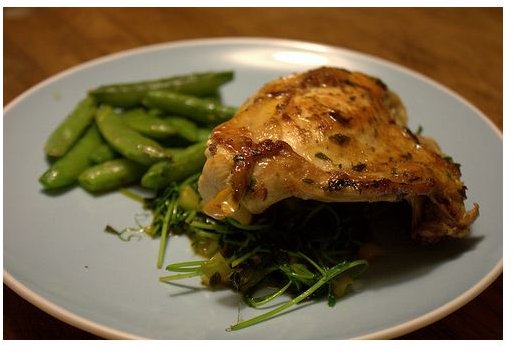A List of Low-Fat Proteins
Essential Protein
The body requires a daily intake of protein to thrive. After water, proteins make up the greatest amount of the body by weight. They are found in muscles, tendons, ligaments, organs, hair, nails, and body fluids. They are not only essential building blocks, but necessary for regular activity. Proteins act as enzymes, hormones, and as the structural foundation of genetic material.
It is no wonder that protein-rich foods are important, but how much is beneficial, and how much is too much? Although each individual has specific needs, it is recommended for the average adult to consume from 64 to 75 grams of protein each day. At the same time, it is vital to well-being to limit the amount of saturated fat in the diet. Many of the foods that are commonly considered to be excellent sources of protein — beef, pork, and other meats — are also very high in saturated fat and cholesterol. While a small amount is alright for most people, too much can be dangerous. This is why it is wise to stick to a list of low-fat proteins for the majority of protein consumed.
Risks of High-Fat Proteins
Red meat, which includes beef, pork, duck, and lamb, should only be consumed in moderation. Although rich in vital nutrients, such as iron, zinc, and some of the B-complex vitamins, they also contain a high percentage of saturated fat per serving. For example, a six ounce piece of steak supplies three quarters of the allowed amount of saturated fat.
Too much fat in the diet can clog arteries, leading to high blood pressure, high cholesterol levels, and eventually increase the risk of heart disease and stroke. These rich animal-proteins are also difficult for the body to digest, putting an unnecessary burden on the liver and gallbladder, which work together to break down fats. The colon is also negatively affected by too much meat. If red meats are desired, practice moderation, choose leaner cuts, and avoid processed products altogether.
Healthy Protein-Rich Foods
Lean animal proteins and vegetable proteins combine the benefits of protein, in a low-fat, nutrient dense package. Try consuming either poultry or fish in place of red meat for healthy eating. Not only are there excellent animal proteins, but vegetable proteins from nuts, legumes, grains, and even dairy, are beneficial as well. Healthy protein sources include:
- Chicken
- Turkey
- Salmon
- Tuna
- Trout
- Halibut
- Shellfish
- Almonds
- Walnuts
- Tofu
- Quinoa
- Amaranth
- Black Beans
- Kidney Beans
- Navy Beans
- Lentils
- Yogurt
- Low-fat milk
- Soy milk
- Eggs
Eat a variety of foods from the list of low-fat proteins, incorporating all sources into the diet. Chicken, turkey, and fish supply plenty of nutrients and essential fatty acids. Nuts, beans, and grains supply nutrients, protein, and fiber. Dairy products are great sources of calcium. Eggs are rich in iron and B-vitamins. Eating these healthy proteins will easily provide an adequate amount of protein, making red meat a personal choice, rather than a dietary necessity.
Resources
Balch, Phyllis, CNC. “Prescription for Nutritional Healing, 4th Edition.” (The Penguin Group, 2006).
“The Nutrition Source Protein.” (Harvard School of Public Health). <hsph.harvard.edu/nutritionsource/what-should-you-eat/protein>.
Photo Credit
photo by: Scaredy Kat (CC/flickr) <flickr.com/photos/scaredykat/3609756126>.
